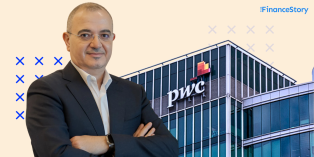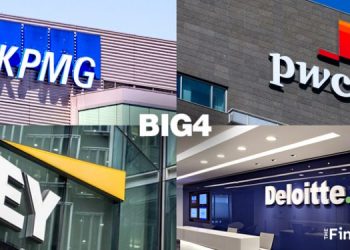- Hi, I am Kushagr Dhingra, a Chartered Accountant who started his career in FP&A later moved to Product Development and Business Finance.
- All of this requires two fundamental skill sets; first principle thinking and understanding of technology.
- CAs are already equipped with financial skills…but they have to learn how to convey business insights.
- Here’s how I found untapped career opportunities.
Analytical mindset led me to an FP&A Role
When I was 10 years old, I remember going grocery shopping with my parents and calculating the cost even before the shopper handed over the bill to me. Yes, I loved numbers as a little boy.
Fast forward to my high school years, when everyone in my class was discussing their career paths, I on the other hand didn’t have a concrete plan.
But in my heart, I wanted to get into a space that required working with numbers and putting analytical skills to use. Chartered Accountancy seemed to meet all those criteria and here started an amazing journey.
During my articles at KPMG, I was tasked with the auditing of financial statements. There was a procedure called an analytical review where I had to find stories behind those financial statements, to ensure that they are accurate.
That’s when I realized that, I want to get closer to the business aspects and help companies make major business-related decisions. It made me look at the role of Financial Planning and Analysis (FP&A).
Three years went by in a flash and I cleared my CA exams in 2015.
An offer from Asian Paints came to me, not for the traditional audit or taxation roles though, but for the one, I was hoping to get…. My journey as an FP&A professional began!
(Asian Paints is an Indian Multinational Paint company with a revenue of US$3.7 billion as of 2022.)
Byju’s: Leap into the world of heavily funded startups
At Asian Paints, I was analyzing the financial statements, tracked spending and budgets, calculated variance, and gave these insights to the executive team, among others.
I was quite comfortable in this position and was enjoying my role. However, in 2017 the Edtech industry in India started growing at a phenomenal pace; leading the revolution was Byju’s.
The impact they were creating in providing good quality education, impressed me. On top of that, I had a passion for teaching.
One day I wrote to the Chief Content Officer of Byju’s, explaining how there wasn’t any non-science or non-mathematical educational content in the app.
Interestingly enough they were looking for somebody who could curate that sort of content.
However, since I was not keen on only content building, I recommended joining the Finance team with an extension of product and content development.
Luckily around the same time, they were building the Strategy and Business Finance team. They agreed and I got on board. I was actually one of their first few hires.
My role at Byju’s was more or less similar to that of Asian Paints; which is FP&A along with Business Finance Strategy and Product Development!
Since it was a startup, there was no distinct line that separated the business finance and FP&A team.
We had to build many processes, functions, and even the team from the ground up. I helped them create budgets, Profit and Loss (P&L) statements, gave insights to the business partners, and so on.
All I am trying to say is that once you get into the startup space, the learning curve becomes super steep. And you get to climb that super quickly.
I’d say in a nutshell, my giant leap of faith of moving to a fast-growing startup was definitely paying off.
More on my role in Business Finance
The fundamental aspect of Business Finance is obviously Finance but it requires a lot of understanding of the business as well.
There are a few aspects that define this role;
One is the traditional aspect of controlling money.
Let’s say the business wants to implement a technology, that is going to save them a million Dollars. They need to run that through a finance person first to see if their calculations are right or not.
Moreover, I would sit with the sales, operations, and other departments to give them an overview of the finances of the business.
I am their go-to person for making financial decisions before starting an operation, a new product line, and others.
Business guys may not be familiar with the term ‘free cash flow’, and that’s when I have to break the concept down into simple words so that they can understand it.
For example “if we implement this automation tool in the organization it is going to save us X number of man hours.”
But the most important thing is to have empathy while talking to business partners.
Build relationships with them in such a way that they don’t fear ‘Finance’ and it doesn’t become a bottleneck in the processes.
Moving to Luxembourg, and Amazon’s startup-like environment
While it is true that my experience at Byju’s was unmatched, my wife and I were looking for a change in both our personal and professional life.
We had been living in India all our lives and wanted to move to a different country, gain international experience, and travel to new geographies.
Europe was on our list for almost 5 years, and eventually, we zeroed in on Luxembourg.
Now it was time to pick an organization.
I found Amazon to be the right fit as it was pretty similar to Byju’s.
With that decided we moved to our new home and joined Amazon’s Business Finance – Global Procurement department.
The thing that struck me the most about Amazon was its work culture.
Even with well-established processes, they still have the spirit of a start-up;
We are empowered to run your own projects, create an impact, influence business partners, and whatnot.
One of the key requirements of Amazon is that you need to be a fast decision-maker.
To stay efficient Amazon follows the popular Two Pizza rule. It basically promotes having a team, small enough so that they can feed off of 2 pizzas. Small teams expedite the decision-making process.
I believe my experience at an Indian startup helped me adapt to the new work culture faster than that of a corporate organization.
Technology and Business Partnering are key
If we are talking about the future scope of FP&A and Business Finance then I would say it is a lucrative career option.
Both of them require two fundamental skill sets; first principle thinking and understanding of technology.
Financial skill is something that CAs are already equipped with, which is one part of FP&A and Business Finance.
But since we spend most of our CA internship years doing audits or taxes, we are not able to get a macroscopic view of our client’s business.
I’ve struggled as well.
Early on in my career, I didn’t know how to communicate financial Insights to my clients in a non-financial language.
Here is some advice:
First of all, you have to spend a lot of time with business partners and try to understand the business.
Only then will you be able to give your clients valuable insights.
Secondly, be well versed with a lot of technological tools. There are a plethora of visualization tools such as Power BI, and Tableau that are critical to the different functions of a business. They give you the ability to automate processes in finance.
Gone are the days when you have to spend the whole day building 100 excel files. Speed is key.
This opportunity to create processes in a dynamic way was what differentiated my experiences at Byju’s from Asian paints.
Looking for a 1:1 call with a mentor to help you in your career? Fill in this form.














